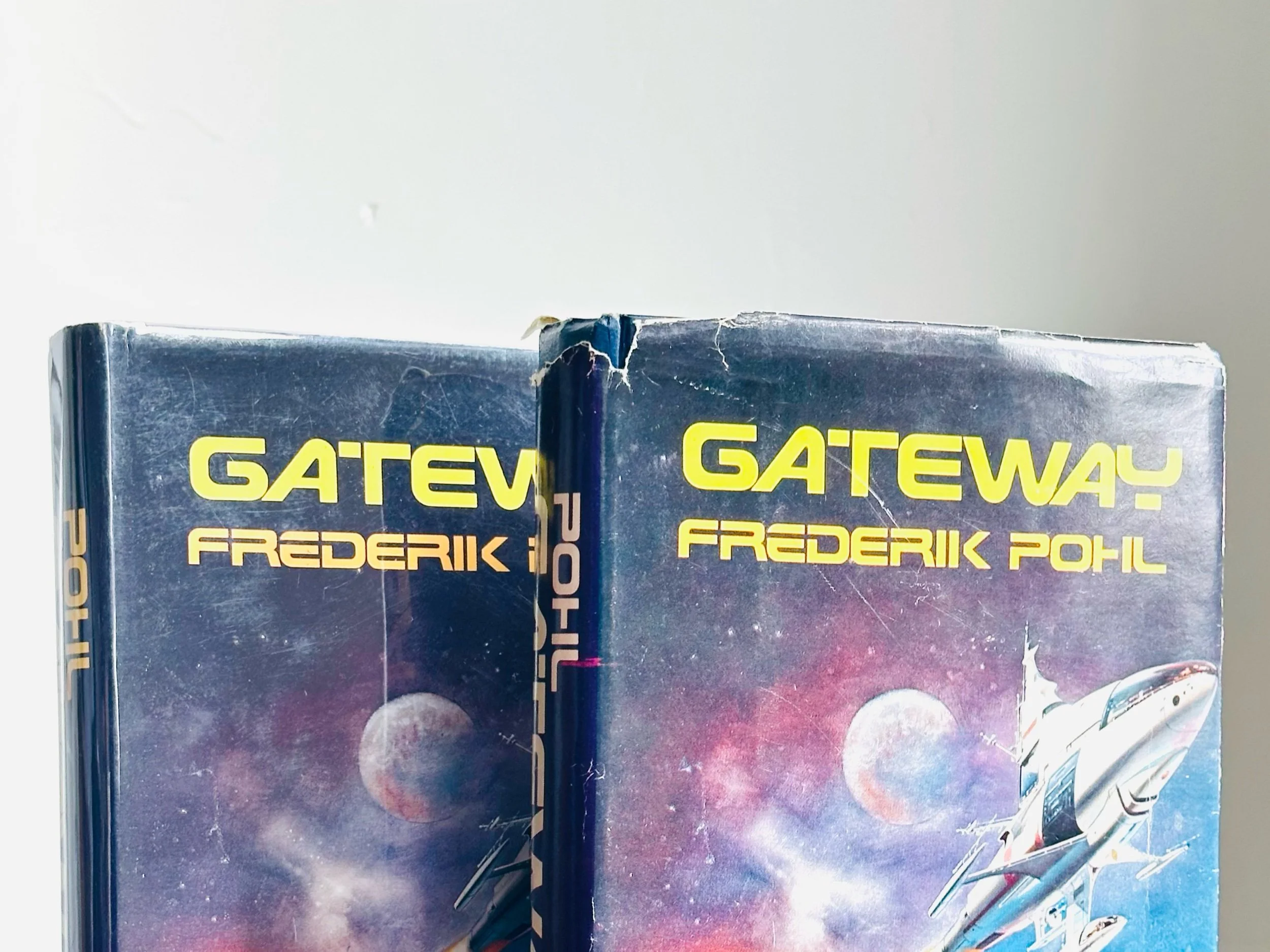Book Club Editions, an Introduction
A Book Club Edition (BCE) of a hardcover book is a version printed specifically for distribution through a book club, such as the Literary Guild, Book of the Month Club (BOMC), or Science Fiction Book Club. These editions are often produced at a lower cost and in higher quantities than the first trade editions sold in bookstores.
How BCEs Differ from First Editions
Production Quality – BCEs often have lower-quality materials, such as thinner paper, less detailed dust jackets, and sometimes no price on the dust jacket flap.
Size & Binding – They may be slightly smaller, with different binding materials or no publisher's imprint on the spine.
Markings – BCEs often lack edition statements and may have a small blind stamp or printed marking on the back cover or inside dust jacket.
Are BCEs Replicas?
Not exactly. While they often mimic the appearance of first editions, there are usually subtle differences in printing, size, and binding. In some cases, BCEs might use the same plates as first editions, making them textually identical, but they are still distinguishable by book collectors.
Are BCEs Valuable?
In most cases, no—book club editions are usually less valuable than true first editions due to their mass production and lower quality. However, there are exceptions.
What Was the First BCE Ever Printed?
The concept of book clubs printing exclusive editions dates back to the 1920s, with the Book of the Month Club (BOMC) launching in 1926. The first official BOMC selection was Lolly Willowes by Sylvia Townsend Warner.
Are There BCEs Worth More Than First Editions?
Yes, though rare. Here are some examples:
Early BCEs with unique features – Some book club editions were issued before the first trade edition, making them desirable.
Highly sought-after signed BCEs – If an author signed a BCE, it could be worth more than an unsigned first edition.
Certain sci-fi and fantasy BCEs – Some Science Fiction Book Club editions (e.g., early printings of Dune) have gained collector value due to limited print runs.
First appearance of a text – If a BCE was the first version to hit the market, it might hold special significance.
In general, though, BCEs are mainly collected for reading rather than investment. If you're ever unsure, comparing points of issue (such as price, binding, and copyright page markings) with a known first edition will help determine value.
Book Club Editions (BCEs) do not have a price on the dust jacket because they were never intended for retail sale in bookstores. Instead, BCEs were distributed directly to subscribers of book clubs like the Book of the Month Club (BOMC) or the Science Fiction Book Club (SFBC) at a set price, often as part of a membership deal. Here’s why publishers omit the price:
1. Sold Through Subscription, Not Retail
BCEs were not sold individually in stores where pricing was necessary. Instead, they were sent directly to club members, often at a discounted or fixed price as part of their membership.
Unlike trade editions, where dust jackets include a price for bookstore customers, BCEs were pre-paid or billed through the book club system.
2. Avoiding Confusion with Trade Editions
Publishers wanted to differentiate BCEs from standard first or trade editions sold in bookstores.
A missing price is one of the quickest ways for collectors to identify a BCE.
3. Preventing Resale at Retail Prices
Without a printed price, BCEs were less likely to be resold in bookstores at the full trade edition price.
This helped publishers and bookstores protect the value of first editions and trade editions.
4. Some BCEs Have Price Markings (Rare Cases)
Some modern BCEs do have price markings, but they are usually on a separate sticker rather than printed on the dust jacket.
Occasionally, book clubs reused trade edition dust jackets (with prices) to save costs, but this is uncommon.
For book collectors, the lack of a price on the dust jacket is a key indicator that a book may be a BCE rather than a true first edition. Other clues include the quality of the binding, a blind stamp or printed marking on the back cover, and differences in dust jacket design or color.
Why Are These BCEs Valuable?
Some were printed before the official trade first editions.
Certain BCEs were issued in small quantities.
Signed copies can make them significantly more valuable.
A few closely resemble first editions, confusing collectors and increasing demand.
While these BCEs can be worth hundreds or even thousands in some cases, they are still generally less valuable than true first editions. However, for budget-conscious collectors, they can be a great way to own early printings of iconic books.







